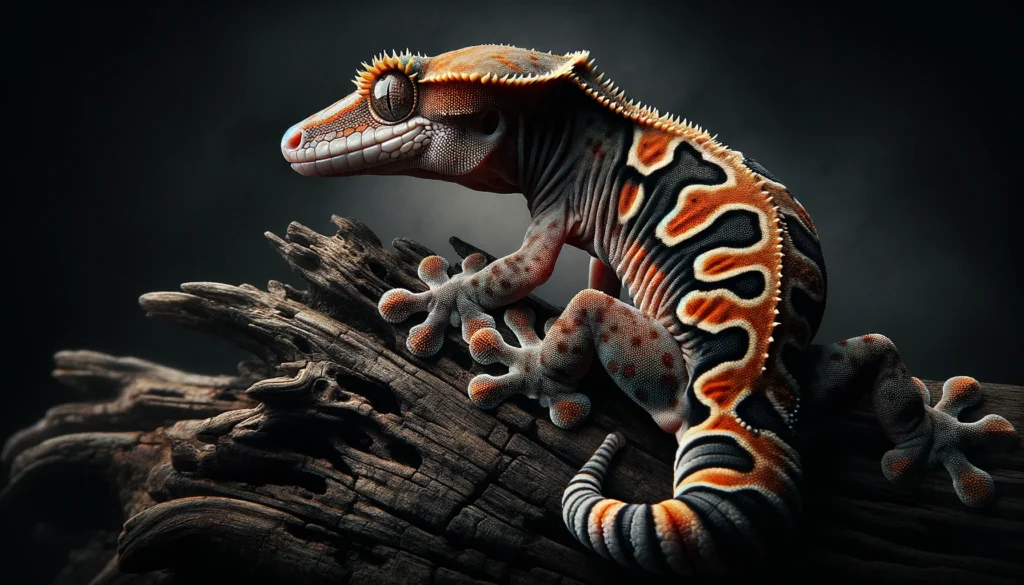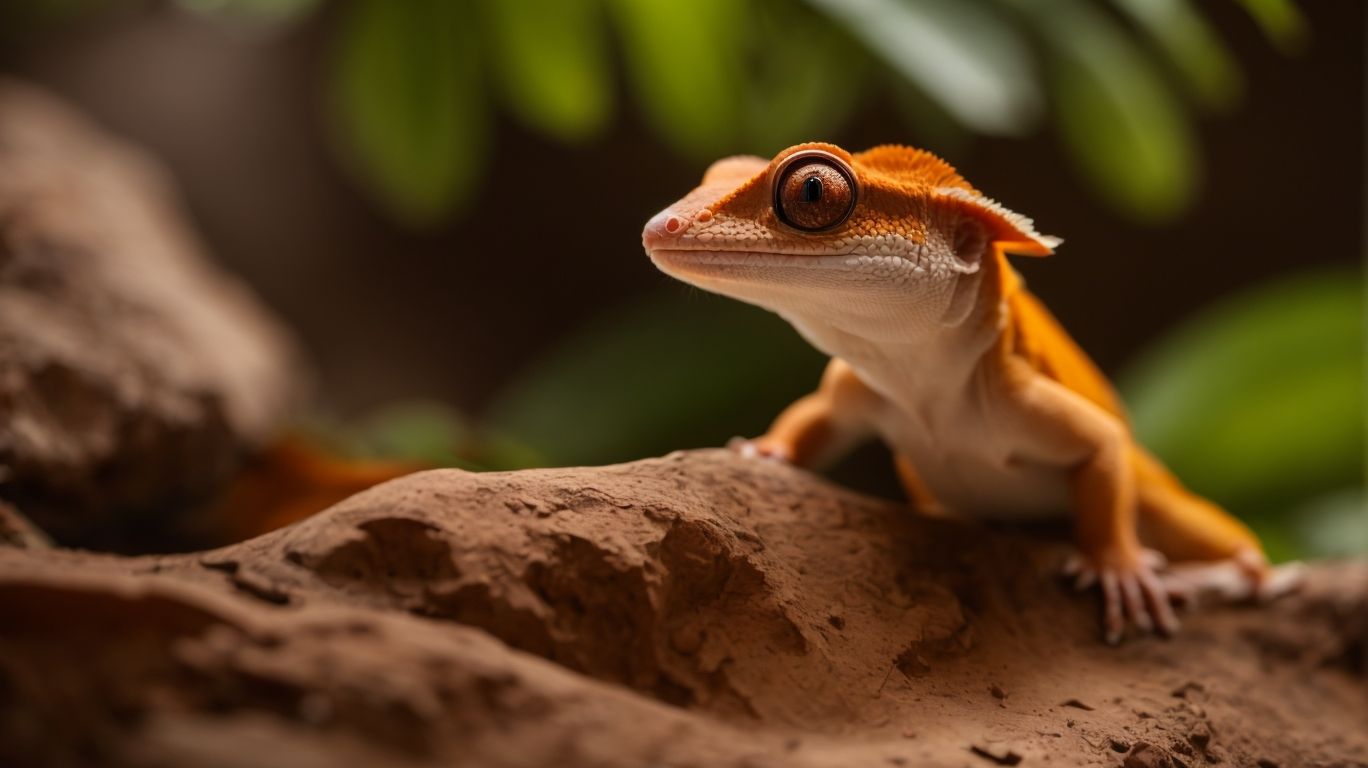
Harlequin Crested Geckos: Understanding This Unique Morph
Harlequin Crested Geckos are a fascinating species that has gained popularity among reptile enthusiasts. From their unique physical characteristics to their diverse color variations, these geckos are a wonder to behold.
In this article, we will explore the distinct features that make Harlequin Crested Geckos stand out, the ideal habitat and diet for these creatures, as well as the common health issues they may face. We will also delve into the breeding season and incubation period for those interested in breeding these captivating geckos.
Whether you’re a seasoned reptile owner or considering bringing a Harlequin Crested Gecko into your home, this article will provide you with valuable insights into the pros and cons of owning these mesmerizing creatures.
What are Harlequin Crested Geckos?
Harlequin Crested Geckos, known for their unique morphs and distinct characteristics, are a fascinating reptile species highly sought after by reptile enthusiasts.
With their vibrant colors and striking patterns, these geckos come in a wide range of morphs, making them a favorite among collectors. Their docile nature and relatively easy care requirements also contribute to their popularity.
Their ability to thrive in a variety of habitats and their endearing behavior make them an ideal pet for both beginners and experienced reptile keepers. Whether you’re drawn to their mesmerizing appearance or their charming personality, Harlequin Crested Geckos undoubtedly captivate anyone who encounters them.
What Makes Harlequin Crested Geckos Unique?
The uniqueness of Harlequin Crested Geckos stems from their diverse genetic traits, resulting in an array of captivating coloration, patterns, variations, and distinct morphs, manifested in their body structure, tail, eyes, and skin.
What are the Physical Characteristics of Harlequin Crested Geckos?
The physical characteristics of Harlequin Crested Geckos encompass their body structure, tail morphology, unique eyes, vibrant skin patterns, and the fascinating shedding process that reveals their stunning colors and markings.
Harlequin Crested Geckos have a slender body and a distinctive triangular head. Their skin is soft and velvety, and their tails are prehensile, allowing them to grip onto branches and surfaces.
Their eyes are large and expressive, with a vertical pupil. These geckos come in a variety of vibrant colors and patterns, often resembling harlequin designs, which is where they get their name from.
During the shedding process, Harlequin Crested Geckos molt in pieces, revealing their evolving colors and patterns with each shedding cycle. This is an intriguing process to observe.
What are the Different Color Variations of Harlequin Crested Geckos?
Harlequin Crested Geckos display a diverse range of color variations, intricate patterns, unique markings, and scale characteristics, making each individual gecko a visually captivating and distinct specimen.
Their color palette includes vibrant hues of red, orange, yellow, green, and even shades of blue and purple, often blending seamlessly to create stunning gradients.
The intricate patterns can range from lively spots and stripes to complex mosaics, evoking a sense of natural artistry. Their unique scale characteristics, such as the distinctive crests along their back and the velvety texture of their skin, contribute to their allure and individuality.
How to Care for Harlequin Crested Geckos?
Proper care for Harlequin Crested Geckos involves meticulous attention to their habitat, husbandry, diet, behavior, health maintenance, handling techniques, reproduction, and breeding, while also addressing specific care tips and potential health concerns such as diseases and parasites.
To ensure a suitable habitat, it’s essential to provide a well-ventilated terrarium with a temperature range of 72-80°F and humidity levels of 60-80%.
Their diet should consist of gut-loaded insects and a variety of fruit and nectar. Understanding their behavior is critical for creating a stress-free environment.
Regular health check-ups and parasite prevention are crucial. When it comes to handling, it’s best to limit it to necessary situations, as they are sensitive.
Successful breeding requires attention to breeding pairs, egg incubation, and hatchling care.
What is the Ideal Habitat for Harlequin Crested Geckos?
Creating the ideal habitat for Harlequin Crested Geckos involves ensuring optimal humidity levels, suitable lighting, a well-designed enclosure, appropriate substrate, enriching plants, and essential accessories to promote their physical and mental wellbeing.
Humidity plays a crucial role in maintaining a comfortable environment for Harlequin Crested Geckos. Ideally, levels should range between 60-80%.
Proper lighting is essential for supporting their natural circadian rhythm. A combination of UVB and UVA light is crucial for their health.
When designing the enclosure, it’s important to include ample climbing opportunities and hiding spots for the geckos to feel secure.
Choosing a substrate that allows for burrowing and retains moisture, such as coconut husk or moss, is highly beneficial for the geckos’ well-being.
Enriching the habitat with live or artificial plants provides stimulation and encourages natural behaviors in the geckos.
Necessary accessories, like a hygrometer, thermometer, and misting system, help in monitoring and maintaining the habitat’s conditions.
What Do Harlequin Crested Geckos Eat?
The diet of Harlequin Crested Geckos primarily consists of a balanced mix of live insects, supplemented with nutritious fruit and specialized commercial diets tailored to their dietary requirements and overall health.
Crested geckos are primarily insectivores, with staple insects in their diet including crickets, mealworms, and dubia roaches.
Fruit such as mashed bananas, mangoes, and apricots provide essential vitamins and minerals.
It is crucial to dust the insects with calcium and vitamin supplements before feeding to ensure the geckos receive adequate nutrition.
Specialized commercial diets designed for crested geckos are available, providing a convenient and balanced alternative to live insects and fresh fruit.
How Often Should You Feed Harlequin Crested Geckos?
Feeding frequency for Harlequin Crested Geckos typically involves offering live insects several times a week, along with periodic supplementation of fruit and commercial diets, tailored to their specific dietary needs and overall husbandry requirements.
This feeding schedule should be adjusted based on the individual gecko’s age, size, and activity level.
It’s crucial to provide a balanced diet that consists of a variety of feeder insects, such as crickets, dubia roaches, and mealworms. In addition to live prey, it’s important to include a variety of fruits such as mango, papaya, and apricot, as well as commercial crested gecko diet to ensure that they receive the necessary nutrients for their overall health and well-being.
Remember to dust the insects with calcium and multivitamin supplements to prevent any nutritional deficiencies. The feeding schedule should be carefully monitored to ensure the gecko maintains a healthy weight and condition.
What are the Common Health Issues of Harlequin Crested Geckos?
Harlequin Crested Geckos may encounter common health issues such as parasitic infections, metabolic bone disease, and skin shedding complications, necessitating vigilant monitoring, proper care, and prompt veterinary attention when necessary.
Maintaining appropriate humidity levels within the gecko’s habitat is crucial to prevent dehydration and shedding problems. Providing a varied diet rich in calcium and vitamin D3 can help stave off metabolic bone disease.
Regular fecal exams can aid in the early detection of parasitic infections, enabling timely treatment. Ensuring a stress-free environment and proper handling can also contribute to the overall well-being of these unique reptiles.
How to Breed Harlequin Crested Geckos?
Breeding Harlequin Crested Geckos involves understanding their reproductive behavior, implementing proper breeding techniques, and leveraging valuable tips to enhance successful morph diversity and genetic traits in the offspring.
During the breeding season, it’s important to closely observe geckos for mating behaviors, including courtship displays and mate selection. When introducing a male and female for breeding, make sure their enclosure has enough hiding spots and suitable environmental conditions.
Proper temperature and humidity levels in their habitat can greatly impact breeding success. To maximize the diversity and genetic traits of offspring, consider pairing geckos with complementary traits and genetic backgrounds. This can result in visually striking and genetically diverse progeny.
What is the Breeding Season for Harlequin Crested Geckos?
The breeding season for Harlequin Crested Geckos typically occurs during specific periods of the year, influenced by environmental factors and reproductive readiness, signaling the ideal time for successful mating and egg laying.
During this period, the lengthening of daylight hours acts as a natural trigger, signaling the onset of the breeding season.
As temperatures rise, these geckos become more active and display mating behaviors. Males may vocalize or chirp to attract females, and females demonstrate receptive behaviors such as lifting their tails. This synchronization of environmental cues and reproductive readiness is essential for the successful mating and eventual egg laying process.
What is the Incubation Period for Harlequin Crested Geckos?
The incubation period for Harlequin Crested Geckos’ eggs spans a specific duration, necessitating optimal temperature and humidity conditions to facilitate the successful development of the embryos and the hatching of healthy offspring.
When incubating Harlequin Crested Geckos’ eggs, it is important to maintain a temperature range of 75-80°F and humidity levels around 80%. Proper ventilation should also be provided to prevent mold formation.
Regular monitoring of the eggs is crucial during this period, ensuring they are not exposed to extreme fluctuations in temperature or humidity. These critical factors play a significant role in the successful development and eventual hatching of the offspring, ultimately influencing the health and vitality of the young geckos.
What are the Pros and Cons of Owning Harlequin Crested Geckos?
Owning Harlequin Crested Geckos offers numerous benefits, such as their fascinating appearance, low maintenance requirements, and unique behavioral traits, yet it also presents challenges related to specific care needs and potential health considerations, necessitating a balanced understanding of the pros and cons of their ownership.
Geckos are visually striking creatures, with vibrant colors and distinctive patterns, making them a popular choice among reptile enthusiasts.
They are low maintenance pets, thriving in moderate temperatures and not requiring UVB lighting, making them appealing for both novice and experienced pet owners.
However, it is important to provide them with a suitable habitat that maintains proper humidity levels and to understand their dietary preferences, which include live insects and fruit-based diets, for their overall well-being.
Responsible ownership also involves being mindful of potential health issues such as metabolic bone disease and shedding difficulties.




No Comments